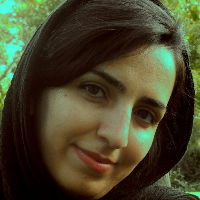The Concept of Violence in Discourse with a View at Michael Haneke’s Hidden Movie
Author(s):
Article Type:
Research/Original Article (دارای رتبه معتبر)
Abstract:
The present study focuses on the characteristic of “violence” in Haneke’s Hidden based on Foucauldian discourse analysis. This concept is based on a set of core societal values and conventions, in a certain era, that prevail through omissions and exclusions exerted by the power structures that constantly constrain the discourses. Foucault's theories of power refer to a transformation of power during the 19th century in which power was transformed from physical violence and exertion onto a body into a psychological manipulation or power from within the body: violence that drives the individual to act willingly and voluntarily. This sense of power and violence can be traced in the cinema. According to the Foucauldian view of power tools, cinematography drastically imposes dominant discourses and subjugates the minds; cinema foists dramatized illusions as dominant meanings through the tricks such as montage, close-ups, assembly, and gaze, and apparatus characteristics of the cinema. The authors examine using a descriptive-analytical method and relying on library resources if Haneke’s Hidden is heavy on violence as the movie revolves around the problem of violence; and also, to what degree the minimal use of violence-bearing cinematographic techniques mitigates the intensity of violence reflected in Haneke’s Hidden. Foucault’s ideas of discourse, the association between science and power, and concepts of ideology and truth are revisited; the authors discuss the subjectivity of violence and the structural violence in cinema. Whether a picture is classified as violent in the cinema depends on the audience's perception and their notion of violence. The term "violent" is sometimes used to describe a variety of violent films as well as particular animated comedy programs for kids. The components of the concept of virtual violence, including cinematic behavior and stylistic domains, are defined. Subsequently, the concept of cinematic apparatus, namely the presentation of imaginary pictures as real, force the viewer to accept the delusion through the process of "sewing.” In addition, apparatus properties of cinematography and its aggressive nature, and how the assembly technique imposes films delusions on viewers are met later. Hidden is analyzed with the emphasis on the Paris massacre of pro-National Liberation Front Algerian demonstrators on October 17, 1961, French atrocities in occupied Algeria and normalization and internalization of segregation and racism discourses in then-French society. The movie involves the concept of "fear of others," the promotion of alienation, isolation, and a lack of dialogue, which are effective in inciting violence and are highlighted by the use of the concept of cut or transition. The message of Haneke’s Hidden is explained through xenophobia where authors also suggest that Haneke uses long shots, flashbacks and transition techniques, and abstracts the apparatus state of cinema, in both content and form, to keep the distance between viewers and the movie, and further alleviate aggressive implications of cinema. The authors conclude that Hidden perversely approaches the violence and criticizes the violence without incorporating concepts of the aggressive essence; the movie, therefore, is not deemed violent despite several graphic scenes. Haneke’s Hidden eloquently tells the horrific inside story of violence and discourse, marginalization and exclusion with minimal demonstration of structural violence.
Keywords:
Language:
Persian
Published:
Honar-Ha-Ye-Ziba: Honar-Ha-Ye Mosighi Va Namayeshi, Volume:25 Issue: 65, 2020
Pages:
5 to 14
magiran.com/p2133913
دانلود و مطالعه متن این مقاله با یکی از روشهای زیر امکان پذیر است:
اشتراک شخصی
با عضویت و پرداخت آنلاین حق اشتراک یکساله به مبلغ 1,390,000ريال میتوانید 70 عنوان مطلب دانلود کنید!
اشتراک سازمانی
به کتابخانه دانشگاه یا محل کار خود پیشنهاد کنید تا اشتراک سازمانی این پایگاه را برای دسترسی نامحدود همه کاربران به متن مطالب تهیه نمایند!
توجه!
- حق عضویت دریافتی صرف حمایت از نشریات عضو و نگهداری، تکمیل و توسعه مگیران میشود.
- پرداخت حق اشتراک و دانلود مقالات اجازه بازنشر آن در سایر رسانههای چاپی و دیجیتال را به کاربر نمیدهد.
دسترسی سراسری کاربران دانشگاه پیام نور!
اعضای هیئت علمی و دانشجویان دانشگاه پیام نور در سراسر کشور، در صورت ثبت نام با ایمیل دانشگاهی، تا پایان فروردین ماه 1403 به مقالات سایت دسترسی خواهند داشت!
In order to view content subscription is required
Personal subscription
Subscribe magiran.com for 70 € euros via PayPal and download 70 articles during a year.
Organization subscription
Please contact us to subscribe your university or library for unlimited access!



